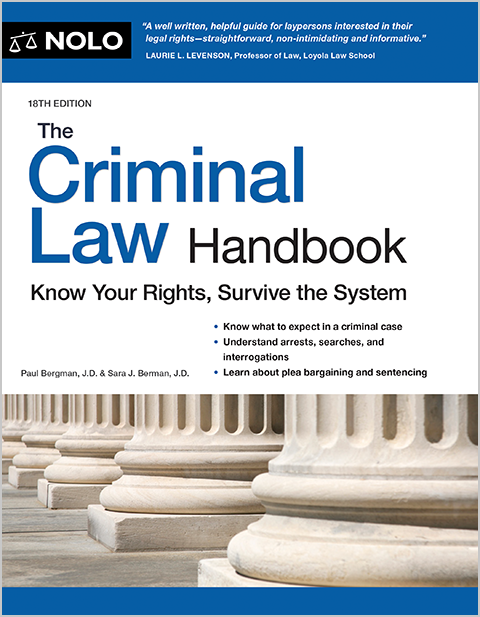Learn what’s what in the courtroom.
Just about everything that happens in a courtroom can seem confusing to someone who hasn't experienced the justice system firsthand. Even the courtroom itself can be confounding. This overview will help orient you to the typical criminal court.
- Understanding the Courtroom Layout
- Where the Judge Sits: The Bench
- Where the Public Sits: The Gallery
- Where the Defendant and Attorneys Sit: Counsel Table
- Where the Jurors Sit: The Jury Box
- Where the Witnesses Sit: The Witness Stand
- Where the Judge Works: Chambers
- Video and Remote Criminal Court Appearances
Understanding the Courtroom Layout
The courtroom layout is deliberate. It's designed not only to impart the seriousness of the proceedings but also plays a practical role. The design allows the various participants—judges, jurors, attorneys, bailiffs, staff, witnesses, and spectators—to best hear and view the proceedings according to their roles.
Where the Judge Sits: The Bench
The judge's bench is the raised wooden desk or podium at the front of the courtroom where the judge sits. It's raised so that the judge can control and preside over the entire room. The judge's staff sits close by so they can communicate quietly. The witness stand is also next to the judge so that the judge can provide a protective influence over the witnesses.
Attorneys and defendants alike shouldn't go near the bench unless they ask for and receive the judge's permission to do so. Generally, only attorneys will be permitted to go up to the bench. Forbidden territory includes the "well," which is the space between the counsel table and the bench, where the courtroom clerk and the court reporter may sit. (Courtroom clerks may alternatively sit on the side of the judge's bench opposite the witness box.)
Where the Public Sits: The Gallery
Most courtrooms have a spectator area in the back—called a gallery—that's often separated by a "bar" or partition from the rest of the courtroom.
Defendants who are free on bail or own recognizance release usually sit in the gallery until their cases are called by the courtroom clerk, bailiff, or judge. In-custody defendants wait in holding cells and are escorted into the courtroom by a bailiff.
Members of the public, including those who come to court to support a family member or friend, also sit in the gallery.
Where the Defendant and Attorneys Sit: Counsel Table
During trial or in a pretrial proceeding, defendants sit with their attorneys at the counsel table, directly in front of and facing the judge's bench.
Courtroom Etiquette: Should the Defendant Sit or Stand?
Typically, once a judge calls a case, the defendant and their attorney move out of the gallery and past the bar to sit at counsel table. Defendants should sit or stand as directed by their attorneys (if they have counsel) or by the judge, courtroom clerk, or bailiff. The custom is different in different proceedings and different courtrooms. For example, during arraignment, defendants typically stand, facing the judge. However, at trial or a hearing on a motion, they may sit at counsel table.
Prosecutors and Defense Attorneys
Whether lawyers stand, and where they do so, depends again on the proceeding. In pretrial hearings, lawyers may stand at counsel table or right in front of the judge, or they may sit. During trials, lawyers usually sit or stand at counsel table, with the prosecutor usually on the side closest to the jury box. Most defense lawyers stand when addressing the judge or questioning witnesses. Some courtrooms have a podium for attorneys to use when speaking to the judge or questioning witnesses.
Where the Jurors Sit: The Jury Box
Jurors sit in the rows of seats near the judge, called the jury box, during the trial. The jury box is typically located to the side of the room, situated so that jurors can see the defendant, witnesses, attorneys, judge, and exhibits. It typically consists of two rows of chairs, with the back row elevated above the front row.
The jury box may remain empty during nonjury proceedings (or when a jury is deliberating), or the judge may use it to seat lawyers or in-custody defendants during pretrial hearings (including arraignments and motions).
Where the Witnesses Sit: The Witness Stand
The witness stand will be situated next to the judge and faces the room. Everyone needs to be able to hear and see the witness. Part of the jury's job is to assess the credibility of the witness and their testimony. Defendants have a constitutional right to "confront" witnesses—meaning the defendant can look the witness in the eye and allow their lawyer to question them. The judge controls the questioning and answering of witnesses.
Where the Judge Works: Chambers
Judges usually have private offices called chambers that are located in a room adjacent to or behind the courtroom. A judge and the attorneys may have a conference in chambers during a trial or other proceeding, especially if they want to go "off the record" and have a quiet place to confer. Also, some judges prefer to hold plea bargain negotiations in chambers.
Attorneys may request that in-chambers conferences be put "on the record" if they want to document what either the lawyers or judges are saying. This is a request that the conference be recorded word for word by a court reporter and preserved as part of the case for possible later review. (See Appeals in Criminal Cases and Writs in Criminal Cases.)
Video and Remote Criminal Court Appearances
Videoconference and remote court appearances have become more commonplace. Remote appearances typically involve a video conference with the judge and prosecutor in a courtroom and the defendant and defense attorney in a jail conference room. Generally speaking, for criminal cases, the use of videoconferencing or remote appearances is limited to pretrial proceedings, such as bail hearings, arraignment, and motions. Trials will be in person but may be recorded or live streamed.
- Understanding the Courtroom Layout
- Where the Judge Sits: The Bench
- Where the Public Sits: The Gallery
- Where the Defendant and Attorneys Sit: Counsel Table
- Where the Jurors Sit: The Jury Box
- Where the Witnesses Sit: The Witness Stand
- Where the Judge Works: Chambers
- Video and Remote Criminal Court Appearances

